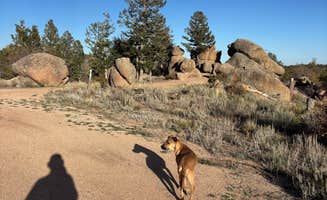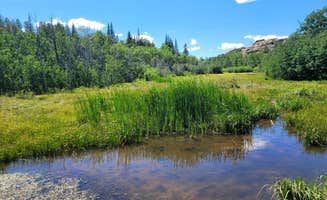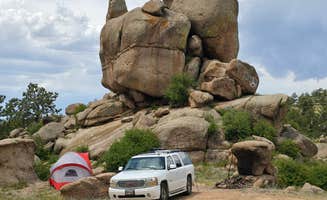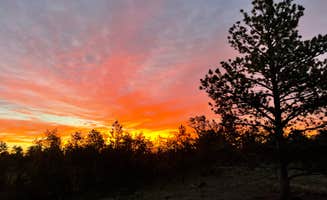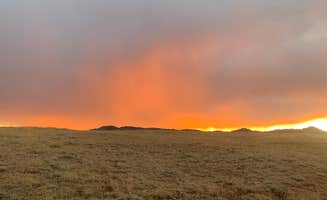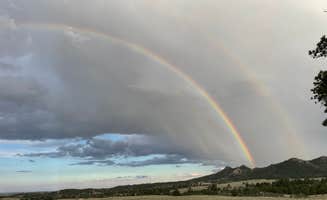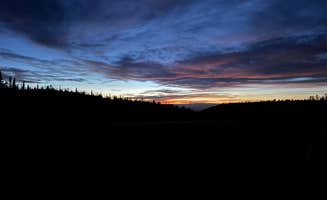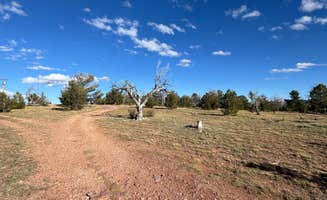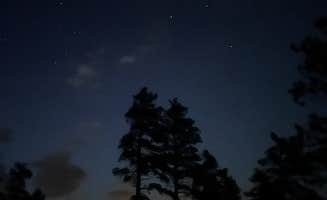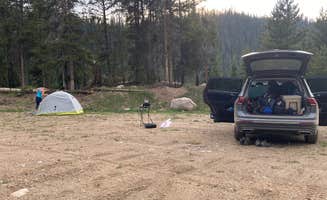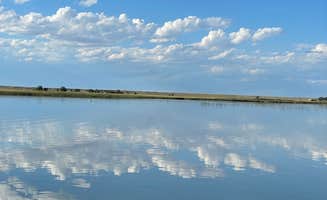Dispersed camping near Buford, Wyoming ranges in elevation from 7,800 to 8,800 feet, creating significantly cooler temperatures than surrounding lowlands. Medicine Bow National Forest features distinctive granite rock formations alongside pine and aspen groves. Summer temperatures typically range from 45°F at night to 75°F during daytime, with afternoon thunderstorms common from June through August.
What to do
Bouldering and rock climbing: The unique granite formations at Forest Service Road 700 Designated Dispersed Camping provide excellent opportunities for climbers of all levels. "We enjoyed hiking, rock climbing and ATV'ing around. Very close to beautiful Laramie and the weather is great up here," notes one camper.
Wildlife observation: Early mornings and evenings offer the best wildlife viewing times throughout the area. "We saw a badger, mama moose and baby. Heard some coyotes at night overall 10/10," reports a visitor to Vedauwoo Wagon Road.
Stargazing: The high elevation and minimal light pollution make this area excellent for night sky viewing. "The stars are beautiful. The land is beautiful. There are even some cows that were hanging around us!" shares a camper, highlighting the dual appeal of wildlife and astronomy.
What campers like
Spacious sites: Many dispersed camping areas offer significant separation between sites. At Vedauwoo Dispersed Sunset Camp, one camper notes, "Each spot is massively spacious with really cool rock formations. The view is gorgeous...lovely fire rings."
Accessibility: Despite the remote feeling, most areas are relatively easy to reach. "Easy access, close to rest stop, tucked off next to highway but relatively quiet," mentions a camper at Pole Mountain Dispersed Camping.
Privacy: The rock formations and forest cover create natural barriers between sites. "Camp sites are well spaced out and it's easy to get in and out with a 2WD vehicle. Beautiful views," explains a visitor to the region, emphasizing how the natural landscape enhances camping privacy.
What you should know
Fire regulations: Restrictions frequently change based on conditions. "There are vault toilets near the entrance but you cannot camp here. It was sunny and windy for our visit in September," notes one camper.
Road conditions: Access roads vary dramatically in quality. At Upper Blaire Dispersed Camping, "The washboard road coming off the highway is harsh but it smooths out when you get closer to camp. There are at least three camp sites I saw that are all secluded by boulders and trees."
Trash management: No services exist for waste removal. "We cleaned up a good amount of small trash left in our area from previous campers like nails and glass, but other than a couple things it was very clean," reports a visitor, highlighting both the issue and the general respect most campers show.
Weather preparedness: Conditions can change rapidly at this elevation. Overnight temperatures can drop below freezing even in summer months, and afternoon thunderstorms develop quickly.
Tips for camping with families
Site selection: Look for sites with natural features kids can explore safely. "Each site has a lot of space. We found a spot with a small pond nearby and trails. We had no one nearby," shares a camper at Pole Mountain Area Dispersed Campsite.
Wildlife awareness: Free-range cattle commonly wander through campsites. "There are cows roaming free in this area. You might find them blocking the road or next to your tent when you wake up," warns one visitor.
Water supply: No potable water exists at primitive camping sites. The Abraham Lincoln Memorial rest area provides the closest reliable water source, so families should plan to bring 1-2 gallons per person per day.
Extra clothing: Even summer camping requires warm layers for nights. Temperature swings of 30-40 degrees between day and night are common in this high-elevation environment.
Tips from RVers
Leveling challenges: The terrain throughout this area requires good leveling skills. "Had to work a little to get level enough to put our slides out. Peaceful and not crowded," notes an RVer with a 41' motorhome.
Site availability: Arrive early, especially on summer weekends. "We took our 41' motorhome in and found a spot (there are 3 or 4 that would accommodate big rigs)," mentions one RVer about the limited options for larger vehicles.
Wind protection: Position RVs with the nose facing prevailing winds when possible. "It gets windy here, and with no warning. Park accordingly, don't leave awnings out unattended, secure ground stuff."
Road navigation: The further from main forest roads, the more challenging access becomes. Many secondary roads have washboarding or ruts that make towing difficult.


